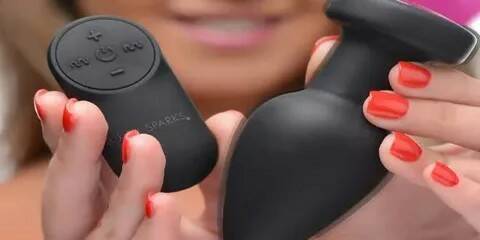
Electronic toys for adults encompass a wide range of products that incorporate technology to enhance pleasure, stimulation, or intimacy. These toys often feature various electronic components, such as motors, sensors, or wireless connectivity. Here are some examples of electronic toys for adults:
Contents
Vibrators:
Vibrators, being one of the most popular adult toys, undergo rigorous safety testing to ensure their effectiveness, reliability, and user safety. Here are some key aspects of vibrator safety testing:
- Material Safety: Vibrators are tested for the materials used in their construction. High-quality, body-safe materials such as medical-grade silicone, ABS plastic, or metal alloys are preferred to minimize the risk of allergic reactions or skin irritations. Testing involves verifying the absence of harmful substances like phthalates or heavy metals that could pose health risks.
- Electrical Safety: Vibrators with electronic components, such as motors or rechargeable batteries, undergo electrical safety testing. This includes verifying that the electrical components meet safety standards, are properly insulated, and do not pose risks of electrical shock or malfunction.
- Mechanical Safety: Vibrators are tested to ensure that they are structurally sound and free from any sharp edges or points that could cause injury. Moving parts, such as switches or adjustable features, are evaluated to ensure they operate smoothly and safely without pinching or trapping.
- Vibration Safety: Vibration https://incognito.black intensity and patterns are tested to ensure they fall within acceptable ranges. Vibrators should not produce excessively strong vibrations that may cause discomfort or numbness. Additionally, vibration motors are tested for durability and reliability to ensure they operate as intended without overheating or malfunctioning.
- Waterproof or Water-Resistant Properties: If marketed as waterproof or water-resistant, vibrators are tested to verify their ability to withstand water exposure without compromising functionality or safety. This includes assessing the effectiveness of seals, gaskets, or closures to prevent water ingress and potential damage to electronic components.

Remote-Controlled Toys
Remote-controlled toys for adults, which include various adult toys controlled through remote devices or smartphone apps, undergo safety testing to ensure their functionality, reliability, and user safety. Here are some key aspects of safety testing for remote-controlled toys:
- Wireless Communication: The wireless communication between the remote control device and the adult toy is tested for reliability, range, and signal stability. This ensures that the toy responds accurately to the commands from the remote control without interference or connectivity issues.
- Electrical Safety: Remote-controlled toys with electronic components, such as motors, sensors, or batteries, undergo electrical safety testing. This includes verifying that the toy and remote control devices meet safety standards, are properly insulated, and do not pose any risks of electrical shock or malfunction.
- Data Security and Privacy: If the remote-controlled toy connects to a smartphone app or utilizes wireless connectivity, testing is conducted to ensure the security and privacy of user data. This involves evaluating the encryption protocols, data transmission, and storage practices to protect personal information.
- User Interface and Controls: Testing is done to assess the user interface and controls on the remote device or smartphone app. This includes evaluating the ease of use, responsiveness, and intuitiveness of the controls to ensure a seamless user experience.
- Battery Safety: Remote-controlled toys with battery-powered operation are tested for the safe handling of batteries. This includes proper installation, secure battery compartments, and protection against short circuits or overheating.
App-Enabled Toys
App-enabled toys for adults, which incorporate smartphone apps to enhance functionality and interaction, undergo safety testing to ensure their effectiveness, reliability, and user safety. Here are some key aspects of safety testing for app-enabled adult toys:
- Data Security and Privacy: App-enabled adult toys involve the exchange of data between the toy and the smartphone app. Safety testing includes evaluating the security measures in place to protect user data, such as encryption protocols, secure data transmission, and secure storage practices. Ensuring the privacy and confidentiality of user information is crucial.
- App Performance and Stability: The performance and stability of the smartphone app are tested to ensure it functions as intended without crashing, freezing, or experiencing other technical issues that could affect the user’s experience. Testing includes evaluating the app’s compatibility with different operating systems and versions to ensure broad accessibility.
- Wireless Connectivity: App-enabled toys rely on wireless connectivity, typically through Bluetooth or Wi-Fi, to communicate with the smartphone app. Testing involves verifying the reliability, range, and stability of the wireless connection to ensure seamless interaction between the toy and the app.
- User Interface and Controls: Testing is conducted to assess the user interface and controls within the smartphone app. This includes evaluating the ease of navigation, responsiveness of controls, and clarity of instructions to ensure a user-friendly experience.
- Battery Usage and Efficiency: App-enabled toys may utilize the smartphone’s battery power or have their own built-in batteries. Testing is done to evaluate battery usage and efficiency, ensuring that the toy and app operate optimally without excessively draining the smartphone’s battery.
Couples’ Toys:
Couples’ toys, designed to enhance intimacy and pleasure for partners, undergo safety testing to ensure their effectiveness, reliability, and user safety. Here are some key aspects of safety testing for couples’ toys:
- Material Safety: Couples’ toys are tested for the materials used in their construction. High-quality, body-safe materials such as medical-grade silicone, ABS plastic, or metal alloys are preferred to minimize the risk of allergic reactions or skin irritations. Testing involves verifying the absence of harmful substances like phthalates or heavy metals that could pose health risks.
- Mechanical Safety: Couples’ toys are tested to ensure they are structurally sound and free from any sharp edges, points, or rough surfaces that could cause injury during use. Moving parts, such as hinges or adjustable features, are evaluated to ensure they operate smoothly and safely without pinching or trapping.
- Electrical Safety: Couples’ toys with electronic components, such as motors or sensors, undergo electrical safety testing. This includes verifying that the electrical components meet safety standards, are properly insulated, and do not pose risks of electrical shock or malfunction.
- Vibration Safety: If couples’ toys feature vibration functions, the vibration intensity and patterns are tested to ensure they fall within acceptable ranges. Vibrations should not be excessively strong, uncomfortable, or cause numbness. Vibration motors are also tested for durability and reliability to ensure they operate as intended without overheating or malfunctioning.
- Waterproof or Water-Resistance Testing: If marketed as waterproof or water-resistant, couples’ toys are tested to verify their ability to withstand water exposure without compromising functionality or safety. This includes assessing the effectiveness of seals, gaskets, or closures to prevent water ingress and potential damage to electronic components.
Prostate Massagers:
Prostate massagers, specifically designed for prostate stimulation, undergo safety testing to ensure their effectiveness, reliability, and user safety. Here are some key aspects of safety testing for prostate massagers:
- Material Safety: Prostate massagers are tested for the materials used in their construction. High-quality, body-safe materials such as medical-grade silicone, ABS plastic, or metal alloys are commonly used. Testing involves verifying the absence of harmful substances like phthalates or heavy metals that could pose health risks.
- Design and Shape: Prostate massagers are evaluated for their design and shape to ensure they are anatomically suitable for stimulating the prostate. Testing includes assessing the size, curvature, and angles of the massager to ensure optimal reach and comfort during use.
- Mechanical Safety: Prostate massagers are tested to ensure they are structurally sound and free from any sharp edges, points, or rough surfaces that could cause discomfort or injury. The base or handle of the massager is evaluated to ensure it provides a secure grip and prevents accidental insertion too far into the rectum.
- Vibration Safety (if applicable): Some prostate massagers feature vibration functions. If the massager includes vibration, it undergoes additional testing to ensure the vibrations are within safe and comfortable ranges. Vibration motors are tested for durability and reliability, ensuring they do not overheat or malfunction during use.
- Ease of Insertion and Removal: Prostate massagers are evaluated for ease of insertion and removal. Testing includes assessing the smoothness of the surface, the presence of adequate lubrication, and the flexibility of the massager to ensure a comfortable and safe experience.
Suction Toys:
Suction toys, designed to provide stimulation through suction or pressure, undergo safety testing to ensure their effectiveness, reliability, and user safety. Here are some key aspects of safety testing for suction toys:
- Material Safety: Suction toys are tested for the materials used in their construction. High-quality, body-safe materials such as medical-grade silicone, ABS plastic, or non-porous materials are preferred. Testing involves verifying the absence of harmful substances like phthalates or heavy metals that could pose health risks.
- Suction Power and Intensity: Suction toys are tested to ensure the suction power and intensity levels are within safe and comfortable ranges. Testing involves evaluating the strength of the suction, as well as any adjustable settings, to ensure they can be easily controlled and provide pleasurable stimulation without discomfort or pain.
- Design and Construction: Suction toys are evaluated for their design and construction to ensure they are user-friendly and durable. Testing includes assessing the integrity of the suction mechanism, the effectiveness of the controls or buttons, and the overall construction of the toy to ensure it can withstand regular use without malfunctioning.
- Noise Level: Suction toys may produce noise during operation. Testing involves assessing the noise level generated by the toy to ensure it is within acceptable limits and does not compromise privacy or cause disturbance.
- Safety Features: Suction toys may incorporate safety features such as automatic shut-off mechanisms or pressure release valves. Testing involves evaluating the effectiveness and reliability of these safety features to prevent excessive suction or pressure and minimize the risk of injury.